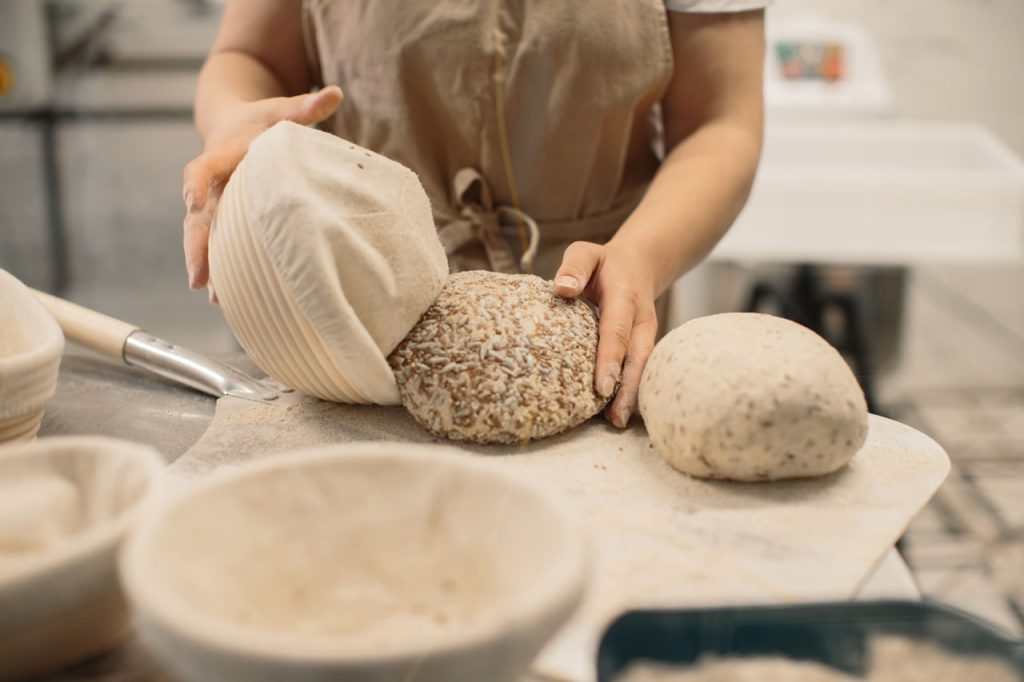Sourdough has long been a staple of artisan breadmaking, and for good reason. Its unique flavor, chewy texture, and crusty exterior make it one of the most beloved breads in the world. But sourdough is more than just a type of bread; it’s a living, breathing organism that requires time, patience, and a deep understanding of the fermentation process. In this article, we’ll explore why sourdough is the heart of artisan breadmaking, how to cultivate your own sourdough starter, and the essential steps to master this bread.
What Makes Sourdough Unique?
Unlike commercial breads that rely on packaged yeast, sourdough is made with wild yeast and natural bacteria that are cultivated from the environment. These organisms work together to ferment the dough, creating the distinctive tangy flavor and airy texture that sourdough is known for. The wild yeast ferments the dough slowly, which allows for the development of complex flavors and a lighter, more digestible crumb.
- Wild Yeast: The wild yeast found in sourdough is naturally occurring in the air and on the grains themselves. Unlike commercial yeast, which is a strain selected for fast fermentation, wild yeast takes its time to develop, resulting in a deeper flavor.
- Lactic Acid Bacteria: In addition to wild yeast, sourdough is also home to lactobacilli, which produce lactic acid during fermentation. This is what gives sourdough its signature tang, making it distinct from other breads.
Cultivating Your Own Sourdough Starter
To begin making sourdough bread, you first need to cultivate a sourdough starter. This starter is a mixture of flour and water that captures wild yeast and bacteria from the environment, creating a living culture. It takes about 5-7 days to develop a strong, active starter, but the process is relatively simple.
Here’s how to start:
- Combine flour and water: Mix equal parts of flour and water in a jar. Whole grain flours, such as rye, are great for starting your culture because they contain more nutrients that encourage yeast growth.
- Let it rest: Allow the mixture to sit at room temperature, uncovered or loosely covered with a cloth. You’ll want to “feed” it daily with more flour and water to encourage the growth of yeast.
- Wait for bubbles: Over the course of several days, you should begin to see bubbles forming in the mixture, signaling the presence of active yeast. At this point, your starter is ready for use.
The Magic of Long Fermentation
Sourdough’s slow fermentation process is key to its unique flavor and texture. While commercial bread may rise in just an hour, sourdough can take anywhere from 12 to 48 hours, depending on the temperature and the specific recipe you’re using.
This long fermentation time gives the yeast and bacteria more time to break down the starches in the flour, which not only helps develop a more complex flavor but also makes the bread easier to digest. The acids produced during fermentation also act as natural preservatives, giving sourdough a longer shelf life than other breads.
Tips for Perfecting Your Sourdough Bread
- Hydration matters: Sourdough dough is often stickier than other bread doughs, but that’s a good thing! High hydration helps to create a more open crumb structure and a lighter loaf.
- Don’t rush the fermentation: Allow your dough the time it needs to rise and develop flavor. While it may take longer than a regular loaf, the result is worth it.
- Temperature control: Both the temperature of your starter and your dough can affect the outcome. Make sure your starter is active and bubbly before using it, and let your dough rise at a cool room temperature for the best flavor.
- Practice makes perfect: Sourdough baking is an art that takes time to master. Don’t be discouraged by the occasional flat loaf or overly tangy result — with each bake, you’ll learn more about how your starter behaves and how to adjust the recipe.
Sourdough isn’t just bread — it’s a journey. From cultivating your own starter to experimenting with different fermentation times, every step offers a learning opportunity. Once you’ve mastered the basics, the possibilities are endless. Add seeds, herbs, or even dried fruits to create unique variations, and enjoy the satisfaction of baking this traditional, delicious bread from scratch.
Ready to take your sourdough baking to the next level? Join our Artisan Bread Craft workshops for expert guidance on perfecting your sourdough technique.
